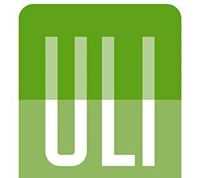Bureau Releases Guidelines for New eClosing Mortgage Pilot Project
WASHINGTON, D.C. – April 24, 2014 – (RealEstateRama) — The Consumer Financial Protection Bureau (CFPB) today published a report which finds that many consumers are frustrated by the short amount of time they have to review a large stack of complex closing documents when finalizing a mortgage. The Bureau also released guidelines for an upcoming eClosing pilot project to assess how electronic closings can benefit consumers as they navigate the mortgage closing process.
“Mortgage closings are often fraught with anxiety,” said CFPB Director Richard Cordray. “We have taken action to address some of the problems consumers face, but more needs to be done. Our eClosing pilot project will provide valuable insight into how to improve the closing experience for consumers. ”
Today’s report and guidelines are the latest components of the CFPB’s “Know Before You Owe” mortgage initiative, which is designed to improve the home-buying experience for consumers. In November 2013, the Bureau issued a rule requiring two, new easier-to-use mortgage disclosure forms that clearly lay out the terms of a mortgage for a homebuyer. The first form is a Loan Estimate, which provides a summary of the key loan terms and estimated loan and closing costs. The second form is a clearer Closing Disclosure, which offers a detailed accounting of the transaction. The Bureau is now in the process of preparing for this rule to be implemented in August 2015. Today’s report and the upcoming pilot program are not part of a rulemaking process, but rather are designed to promote best practices in the marketplace.
Mortgage Closing Process Pain Points
The report released today is the culmination of research conducted over the past year. As part of that research, in January 2014, the Bureau published a Request for Information about the challenges consumers face when closing on a home. The request asked for input from market participants, consumers, and other stakeholders on ways to encourage the development of a more streamlined, efficient, and educational closing process that would be beneficial to consumers.
The Bureau heard about three major pain points for consumers during the closing process:
- Not enough time to review: Many consumers are frustrated by the short amount of time they have to look over the closing documents. Often, they do not see the paperwork until they arrive at the closing table. Consumers reported feeling pressure to rush through the paperwork and sign—even when they did not understand the terms.
- Overwhelming stack of paperwork: When consumers close on a home, they often face stacks of paperwork. Some of the forms are intended to help consumers better understand the costs and risks of their mortgages. Other forms are included by lenders as a result of their legal risk assessments. Remaining forms may fulfill federal, state, and local government requirements. The volume of paperwork varies from lender to lender.
- Complexity of documents and errors: Most closing documents are full of legalese and technical jargon. The terms and acronyms are unknown to most consumers. In addition to having little time to read through and understand a large stack of paperwork, consumers often complained that they had little help from the others in the room. Consumers also mentioned that they found errors in their closing documents. Those errors often led to delays as closing agents had to redo the entire closing package.
When the CFPB’s new Know Before You Owe mortgage rule takes effect, it will address some of these challenges. For example, consumers will receive their new Closing Disclosure at least three business days in advance of closing, to provide more time to review the terms of the deal. However, this rule does not apply to any of the other paperwork consumers receive at the closing table. The Bureau only has jurisdiction over a few forms in the closing stack. More needs to be done to improve the closing experience for consumers.
The report on mortgage closings is available at:http://www.consumerfinance.gov/reports/mortgage-closings-today/
eClosing Pilot Project
The CFPB identified electronic closings, also known as eClosings, as one solution to address these pain points. eClosings are already happening in the market today, but adoption is low. There is a lot of misinformation about the legality and feasibility of eClosings. Today, the Bureau is releasing its guidelines for a pilot project to study eClosings. The pilot project, which will launch later this year, is designed to enable the CFPB to better understand the role that eClosings can play in addressing consumers’ pain points.
eClosings can lead to a more knowledgeable consumer experiencing a better, more efficient process. However, eClosings may also present risks to consumers. For example, switching to an electronic process could reduce the amount of time consumers spend reading the closing documents and actively engaging in the process.
Because eClosings offers both benefits and risks, the CFPB’s pilot project will evaluate whether electronic closings can increase efficiency, consumer understanding, and minimize surprises at the closing table. The guidelines released today list the minimum functionalities required of potential participants and highlight some advanced features the CFPB will be looking to test in the pilot. Pilot participants must submit proposals as a partnership between a technology vendor providing an eClosing solution and a lender that has contracted to close loans with that solution.
The CFPB will work with participants to test many eClosing features, including those that may:
- Enable consumer understanding: The CFPB plans to test whether educational materials like document summaries, term definitions, or process explanations that can be reviewed prior to the closing table help improve the process for consumers. The Bureau also plans to evaluate whether the order of the documents changes the consumer experience.
- Incentivize early document review: The CFPB plans to study the various technologies that would let consumers see the entire package of closing documents ahead of time. Within this pilot, the Bureau would like consumers to have at least three business days prior to closing to review the stack of documents. The Bureau wants to evaluate how early review of the documents may impact the closing process.
- Facilitate error detection: The CFPB wants to test tools that will help both industry members and consumers spot errors and discrepancies in the closing documents. Such a tool could help consumers easily find the differences between their original estimate and their closing disclosures, preventing last minute surprises.
The eClosing pilot guidelines are available at:http://files.consumerfinance.gov/f/201404_cfpb_guidelines_eclosing-pilot.pdf
Details on how to apply to be a participant are available in the Broad Agency Announcement.
As the CFPB continues with this pilot and its other “Know Before You Owe” efforts, it will continue to work collaboratively with all stakeholders, including other regulators, to implement its new rule for mortgage disclosures and improve the mortgage closing experience for consumers.
















